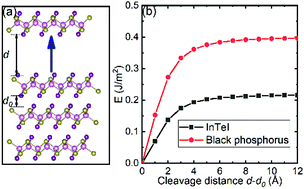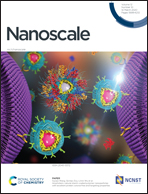InTeI: a novel wide-bandgap 2D material with desirable stability and highly anisotropic carrier mobility†
Abstract
Recently, stable 2D wide-bandgap semiconductors with excellent electronic and photoelectronic properties have attracted much scientific and technological interest. In this study, we predict a novel InTeI monolayer which has a wide bandgap of 2.735 eV and a anisotropic electron mobility as high as 12 137.80 cm2 V−1 s−1 based on first-principles calculations. With an exfoliating energy lower than that of monolayer phosphorene, it is feasible to synthesize the 2D InTeI monolayer through mechanical exfoliation from their 3D bulk crystals. Remarkably, the monolayer InTeI achieves the indirect-to-direct bandgap transition under a small in-plane uniaxial strain, while a quasi-direct bandgap can be achieved in the InTeI nanosheets with elevated thickness. The InTeI monolayer and nanosheets have suitable band alignments in the visible-light excitation region. In addition, our theoretical simulations determine that 2D InTeI materials exhibit more excellent oxidation resistance than black phosphorene. The results not only identify a novel class of 2D wide-bandgap semiconductors but also demonstrate their potential applications in nanoelectronics and optoelectronics.



 Please wait while we load your content...
Please wait while we load your content...